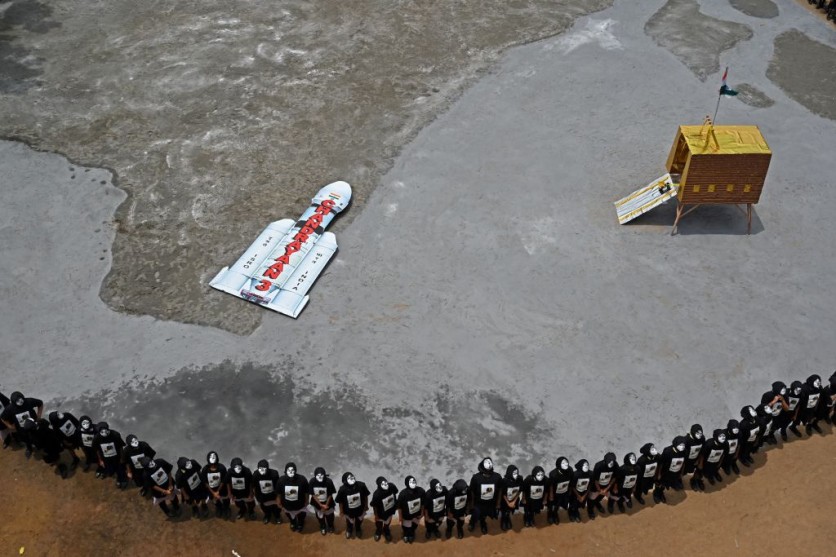India achieved a historic milestone last month with the successful landing of the Chandrayaan-3 moon lander near the lunar south pole.
However, despite this achievement, the moon lander and its accompanying rover have remained unresponsive to numerous wake-up calls, raising concerns that their mission may have concluded, Business Insider reported.

India's Chandrayaan-3 Moon Lander, Rover in Sleep Mode
The two robots reportedly entered a sleep mode in early September, coinciding with the onset of the lunar night. Their batteries depleted during this period due to the lack of sunlight.
The Indian Space Research Organisation (ISRO) anticipated a reawakening on September 22, with the commencement of the lunar day and the subsequent recharging of their solar panels.
However, the Vikram lander and its sidekick, Pragyan rover, failed to respond to mission control's repeated attempts to re-establish communication. Scientists and engineers have highlighted the harsh lunar environment as a significant factor in their current status.
Specifically, the extreme nighttime temperatures, which can plummet to as low as -334 degrees Fahrenheit, are far beyond the design parameters of the lander and rover's technology. These conditions were simply not anticipated in their original specifications.
Read Also : Full Moon: What Does Each Name Mean? Learn the Special Meaning Behind Names Ahead of 2023's Last Supermoon
Moon's Potential Habitability
In a related development, data collected from the Chandrayaan-3 mission provides exciting insights into the moon's potential habitability for human beings.
The Vikram lander and Pragyan rover have yielded crucial information suggesting that the moon may be more conducive to human colonization than previously believed.
Of particular note is the temperature differential discovered beneath the lunar surface. While the surface can experience searing temperatures of up to 50°C, just 8 cm below, temperatures plummet to a bone-chilling minus 10°C.
This revelation has profound implications for designing lunar habitats, as the lunar regolith appears to have impressive insulating properties, potentially reducing the need for extensive insulation efforts.
Furthermore, the Pragyan rover's analyses have identified the presence of oxygen within lunar soil. This discovery opens up the prospect of generating breathable oxygen directly from lunar resources.
The detection of oxygen, particularly in the form of ilmenite, underscores the concept of in-situ resource utilization (ISRU), which could prove pivotal in sustaining extended lunar missions and expanding our understanding of lunar habitability.
Related Article : Scientists Capture the Highest-Resolution Radar Images of the Moon Using Green Bank Telescope

![Apple Watch Series 10 [GPS 42mm]](https://d.techtimes.com/en/full/453899/apple-watch-series-10-gps-42mm.jpg?w=184&h=103&f=9fb3c2ea2db928c663d1d2eadbcb3e52)



